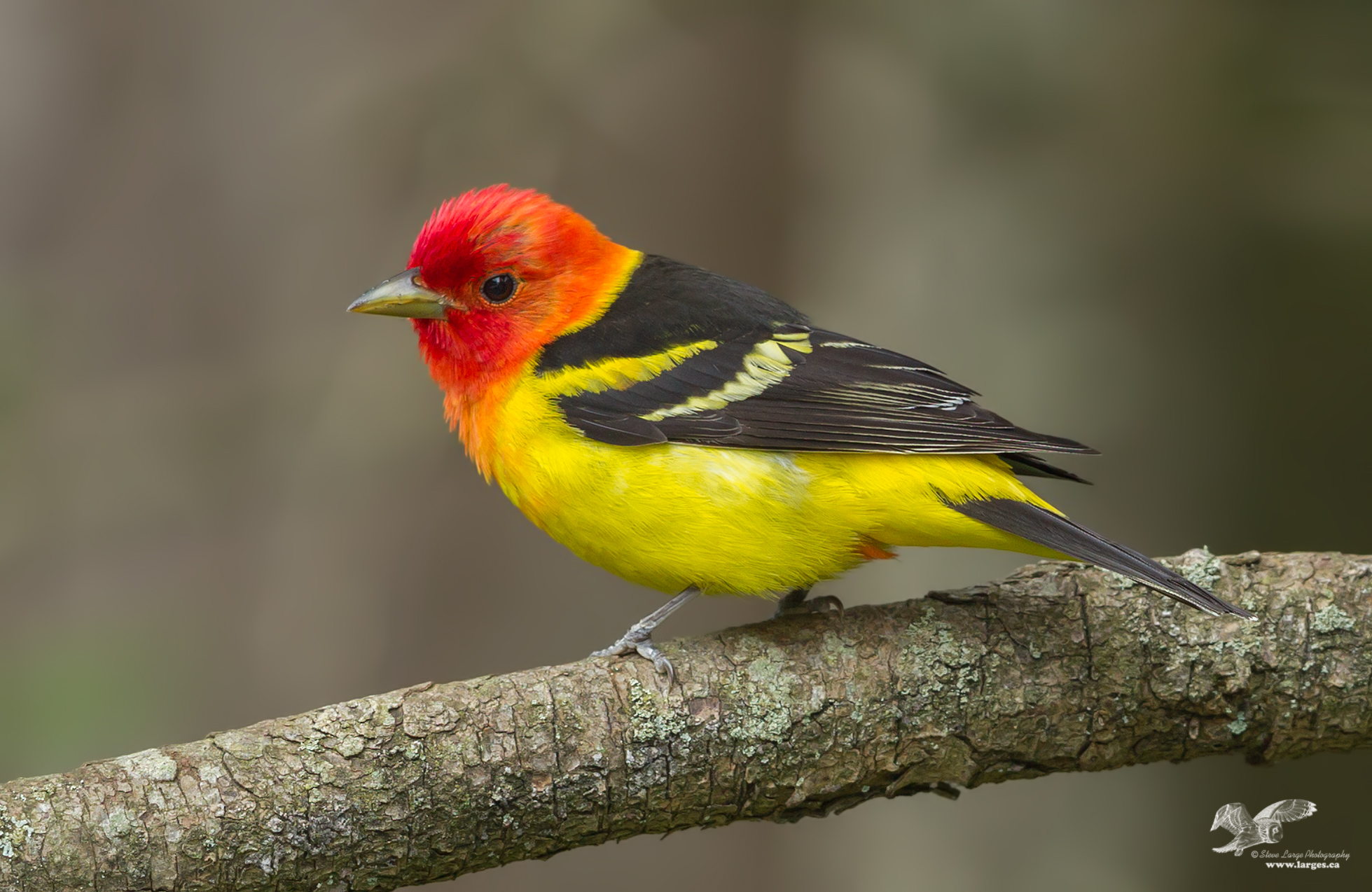About Western Tanagers
What Are Tanagers?
Tanagers are neo-topical birds that migrate from southern countries such as costa rica and brazil to end up in our northern habitat. They usually only spend a few months here from late spring to early fall before returning to their south american homes. There are well over a hundred different species of tanager in south america but we only get a handful of them coming to Canada. On our west coast the main migrant is the Western Tanager (pictured above). On the east coast of canada there are a couple more different species such as the Scarlet Tanager, Summer Tanager, and occasionally the Hepatic Tanager. Although all their body types are similar the main differnces are coloration and a slight variation in their song.
Interesting Facts
Western Tanagers don’t start out with that brilliant red head that we see each spring. They start out their journey from South America as a mostly yellow bird with black wings and a black tail. The red pigment comes later when they have had a chance to feed in the north american forests on selected insects which carry the pigment known as rhodoxanthin. This special pigment causes their heads to blush to red and is an indication to the female tanager that the male is ready to mate and also an indication that he will be a good insect provider for their offspring. The male will instinctively ingest as much of this pigment as he can in order to attract a suitable mate.
After the mating season is over the male goes back to a normal diet of insects and berries and the colorful red head slowly disappears. By the time he is ready to head back to Costa Rica he will be hard to pick out from many of the young fledglings that are also the default yellow and black.
How Do I See Tanagers?
When I first started seeing Western Tanagers I was a young boy up in the Comox Valley here on Vancouver Island. You would only see a tanager every couple of years on an incidental basis. Perhaps near a river in spring time or a local park when the weather was warm and sunny. That doesn’t mean that there are not lots around in the spring and summer, quite the contrary. Much of this lack of exposure is due to the almost secretive nature of the bird. When they first arrive they are very skittish and tend to spend much of their time in the forest canopy. If you aren’t a trained observer you could easily miss them. A person must also be attuned to their song as for many of us we will often hear a bird long before we see it. You might think that such a brightly colored bird would be easy to spot but it is amazing how they blend in to their environment. I have used bird calls on my iphone to call them in for photography but this must be done sparingly. Birds are not stupid and it doesn’t take long before they figure out that you aren’t another male tanager in their territory. Needless to say, along with other species such as the Black-Headed Grosbeak and the Bullocks Oriole, Western Tanagers remain one of the main highlights of spring time for me and I hope to be able to photograph and enjoy them for years to come.
Take care and good light,
Steve

